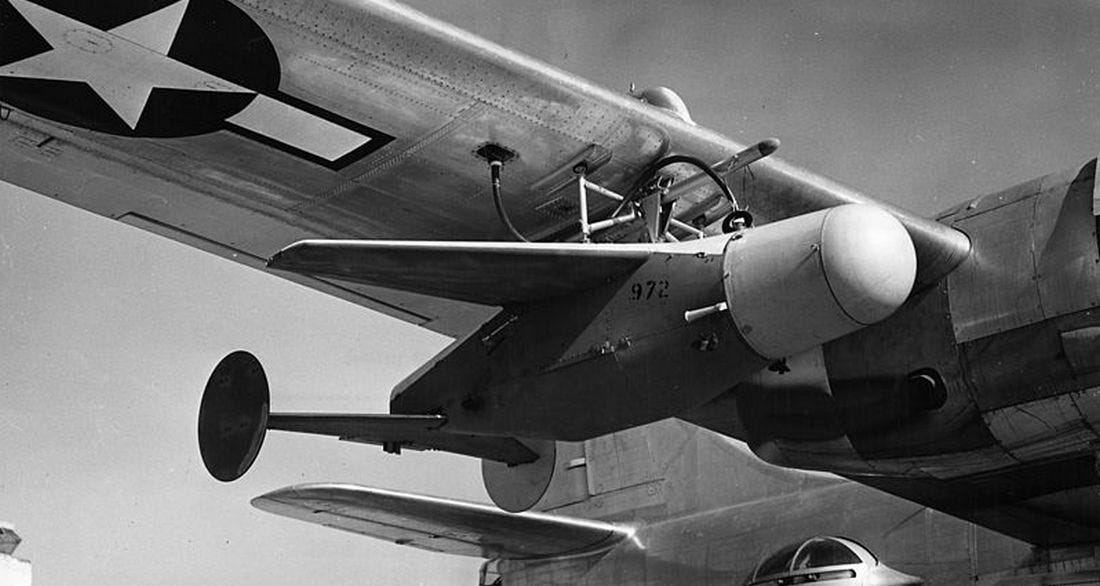Steve Weintz
Combat robots go back nearly 100 years
We think of drones as uniquely modern weapons of war. But they’re not. The first combat drone appeared during World War I. And the next world war saw even more flying robots on the front lines.
In 1917, American inventor Charles Kettering, later chief scientist for General Motors, created the Aerial Torpedo, an ingenious guided missile. It soon earned the nickname “Bug.”
A ground crew mechanically programmed a Bug and launched it from a railroad-like track. The small pilotless biplane steered itself via gyroscope and logged its flight time by counting engine revolutions.
Near its target, the Bug’s engine stopped, its wings fell off and the primitive cruise missile fell to Earth with its 180-pound explosive warhead.
Though the Bug achieved moderate success during testing, it never saw combat. It arrived too late to enter war service and Allied commanders worried about cranky explosive-laden drones flying over the heads of their troops.
 The Bug remained a classified military secret until World War II, by which time whole new classes of drones were buzzing into battle.
The Bug remained a classified military secret until World War II, by which time whole new classes of drones were buzzing into battle.
A robotic B-17 takes off. All photos on this page via Wikipedia
Buzz bombs & beat bombers
The German V-1 buzz-bomb, a jet-powered cruise missile, was World War II’s most famous drone. Like the Kettering Bug and some modern drones, most V-1s lifted off from a rail launcher and guided themselves using gyroscopes.
The V-1’s simple pulse-jet engine sounded like a flying fart machine and pushed it along at 400 miles per hour.
Although its one-ton warhead could cause serious damage on impact, the slow- and low-flying V-1 soon fell prey to British defenses, including fighter pilots’ improbable but effective technique of flipping the V-1s over in mid-flight using their planes’ wingtips.
Nazi engineers investigated more advanced weapons including drone-mothership designs and prototype missiles with infrared and television sensors … but none of them arrived in time to save the Third Reich.
The Allies also developed war-drones. Under programs with code names like Operations Aphrodite and Operation Anvil, Allied scientists in the European theater fitted war-weary B-17 and B-24 bombers and PB4Y patrol planes with radio controls, TV cameras and up to 10 tons of explosives.
Controllers aboard a guide plane flew these giant flying bombs by way of simple joysticks while watching a TV view of the drones’ cockpit instruments.
But the remote system was incapable of handling takeoff and arming the warhead, so courageous volunteers piloted the drones from the ground to 10,000 feet before bailing out.
With such crude technology most Aphrodite/Anvil missions ended in failure or disaster. Controllers either lost control of the drones or the pilots died in mishaps.
By late 1944, the Allies had abandoned the projects, although not before one drone mishap claimed the life of Joseph Kennedy, Jr., the older brother of the future U.S. president.
Human drones
The U.S. Navy had better luck with drones in the Pacific, although its efforts also came too late to truly affect the war’s outcome. Under a top-secret program, the Interstate Aircraft Company produced the TDR-1, a twin-engine, wood-hull flying robot capable of delivering either a one-ton bomb or a torpedo.
Operators aboard Avenger torpedo planes controlled the TDR-1s using the same technique as the Project Aphrodite bombers—a TV camera pointed at the cockpit instruments.
New electronics including radar altimeters and radios gave the controllers better control and range. TDR-1s successfully attacked several Japanese targets.
But as with other drone projects, the combination of crude technology, developmental delays and the effectiveness of conventional methods of attack pushed the TDR-1 out of service by the end of 1944.
The Navy also developed the ASM-2 “Bat” glide bomb, which guided itself to its target using a radar-homing system. Bats successfully struck Japanese ships and bridges in Burma in the final months of the war in 1945.
For all that, the most successful and sophisticated missile guidance system of World War II was actually a human being. “In 1945, the U.S. Navy was on the receiving end of the first mass salvo of guided missiles in history—the kamikaze attacks that occurred off the coast of Okinawa,” U.S. Deputy Defense Secretary Robert Work said in a recent speech at the Naval Postgraduate School.
Kamikaze pilots did the work of drones, without enjoying the major advantage of drones—that they’re pilotless.
Although U.S. pilots and gunners destroyed most of the attacking kamikaze aircraft, the few that got through damaged the aircraft carriers Franklin,Hancock, Intrepid, Enterprise and Bunker Hill, as well as several destroyers—and killed hundreds of American sailors.
In 1945, thousands of kamikaze pilots and planes prepared to defend the Japanese home islands in the event of a full-scale Allied invasion. Allied commanders dreaded the prospect of massive casualties. The ferocious effectiveness of the suicide planes influenced the Americans’ decision to drop atomic bombs on Japan in lieu of invasion.
In an odd example of historical inversion, similar calculations drive America’s drone war today. Facing fanatical foes and unwilling to place too many of its own people in harm’s way, the United States sends in robots, instead.
By now it’s a time-honored tradition.

No comments:
Post a Comment